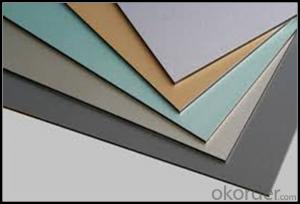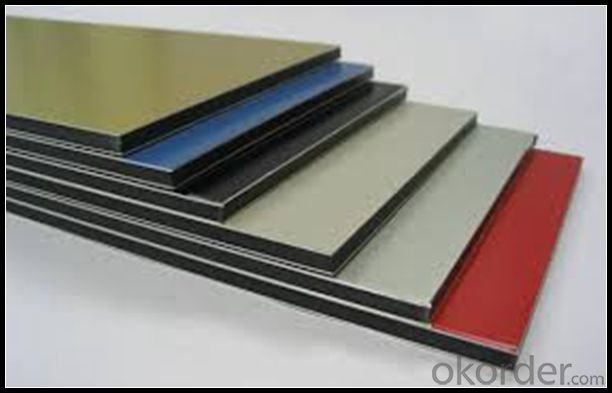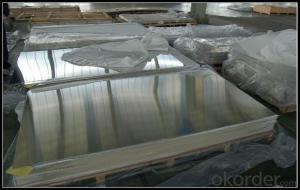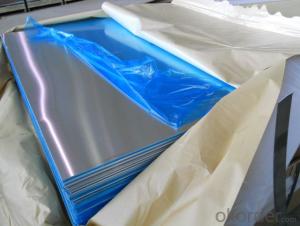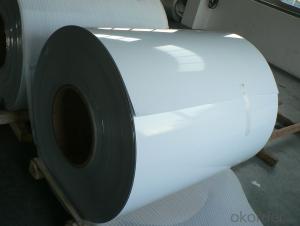Aluminum Tread Plate Sheets for Curtain Wall System
- Loading Port:
- Shanghai
- Payment Terms:
- TT OR LC
- Min Order Qty:
- 5 m.t.
- Supply Capability:
- 100000 m.t./month
OKorder Service Pledge
OKorder Financial Service
You Might Also Like
Specification
1.Structure of Aluminium Composite Panel for Curtain Wall System
Aluminum Sheets are strengthened and cut from raw materials with different alloys, such as AA5005, AA5052, etc. They are easy for processing in different shapes, good in intensity and can be quickly installed. Aluminium Sheets for Energy Saving Curtain Walls are good in energy saving, weather resistance, fire resistance, easy for maintenance and with many colors.
Aluminium Sheets for Energy Saving Curtain Walls are widely used in construction of metal walls, metal ceilings, car decoration, advertizing panels, etc.
2.Main Features of Aluminium Composite Panel for Curtain Wall System
•High intensity
•Easy to be processed and shaped
•Weather resistance
•Anti-pollution & environment protection
3. Aluminium Composite Panel for Curtain Wall System Images
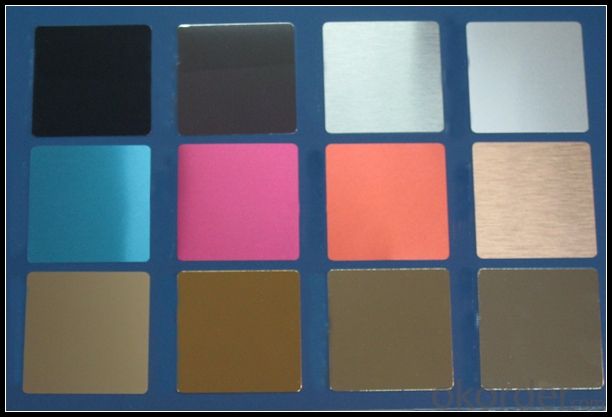
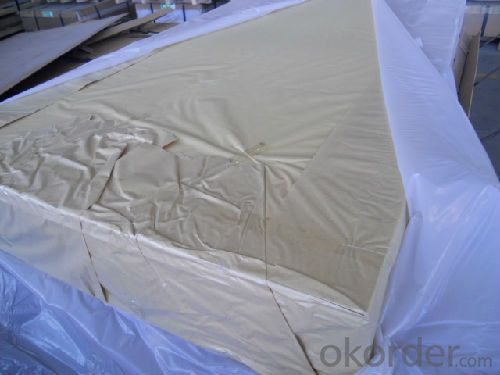
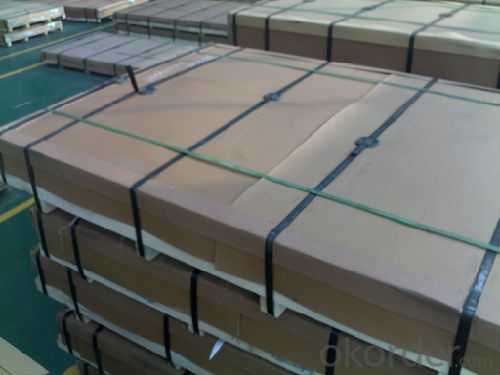
4.Specification of Aluminium Composite Panel for Curtain Wall System
Alloy Number | AA5XXX |
Temper | H12, H14, H16, H18, H22, H24, H26, H32, HO, F |
Thickness | 0.1mm – 500mm |
Width | 10mm- 2200mm |
Standard | GB/T3880-2006, ASTM, ISO, EU standard |
5.FAQ
A.What about inspections to guarantee quality?
For each order for Aluminum Sheets with Mill Finished Surface AA5XXX, we will arrange strict inspection for raw materials, inspection during production and inspection for finished goods.
With requirement of customers, we also can arrange the third party inspection.
B.What about delivery?
We will put order for Aluminum Sheets with Mill Finished Surface AA5XXX in production schedule after order gets confirmed against copy of TT or L/C. Normally it takes about one month for production. Exact shipment schedule is different based on different sizes and quantity.
C.What is the MOQ?
5 tons for each size.
D. Where have you exported aluminium sheets?
We have exported aluminum sheets to many countries. Main markets include South East Asia, Middle East, North America, South America, etc.
- Q: What specific treatments or coatings are required for exterior applications to ensure durability and protection?
- <p>Yes, for exterior applications, special coatings or finishes are often necessary to protect against weathering, UV radiation, and other environmental factors. These may include weather-resistant paints, UV-resistant coatings, and corrosion-resistant finishes. For example, in construction, exterior walls might be treated with a water-repellent coating to prevent water damage, while metal structures may require anti-corrosion coatings to withstand harsh weather conditions. The choice of coating depends on the material, climate, and specific requirements of the application.</p>
- Q: What is the surface finish of 101 aluminum sheets?
- The surface finish of 101 aluminum sheets can vary depending on the manufacturing process and desired application. Common surface finishes for 101 aluminum sheets include mill finish, brushed finish, and polished finish.
- Q: what's the temperature tolerance of aluminum sheets?
- aluminum is a kind of silver white metal,melting point:660.4℃, boiling point: 2467℃,density: 2.70 g/cm?,very light, about 1/4 of iron's density.it has low hardness and good ductility, which makes it suitable for being pulled into threadlets or pressed into aluminum foils, and the later is usually used for packaging candy and cigarette. it has good electrical and temperature conductivity. it's used for the manufacture of electric wire and cable in electric power industry, and for the manufacture of cooker in daily life bined with the magnesium , copper,zinc,tin,manganese,chromium,zirconium,silicon and other elments,it can formulate various alloys that is broadly used for the manufacture of airplane,car,ship, materials of daily living equipment and the doors and windows of construction industry.aluminum is one of the best reflectors of heat and light, so it is used as thermal insulation material and the manufacture of reflecting mirror in the reflecting telescope.
- Q: Can aluminum sheets be brushed or satin finished?
- Yes, aluminum sheets can be brushed or satin finished. Brushing or satin finishing is a process that involves creating a textured surface on the aluminum sheets. This can be achieved by using abrasive materials, such as sandpaper or wire brushes, to create a pattern of fine lines or scratches on the surface of the metal. This process is often used to enhance the appearance of aluminum sheets by giving them a more matte and textured finish. Additionally, brushing or satin finishing can also help to hide small imperfections or scratches on the surface of the aluminum sheets. Overall, the ability to brush or satin finish aluminum sheets provides flexibility in terms of achieving desired aesthetics and surface textures for various applications.
- Q: What is the melting point of aluminum sheets?
- The melting point of aluminum sheets is approximately 660 degrees Celsius or 1220 degrees Fahrenheit.
- Q: This question asks if aluminum sheets can be utilized for both exterior and interior purposes.
- <p>Yes, aluminum sheets can be used for both exterior and interior applications. They are popular for exterior use due to their durability, resistance to weather, and low maintenance requirements. For interior applications, aluminum sheets are valued for their lightweight, easy installation, and aesthetic appeal. They are commonly used in construction, automotive, and aerospace industries, among others. However, it's important to note that specific treatments or coatings may be necessary to enhance their performance in different environments.</p>
- Q: How do you prevent fingerprints on aluminum sheets?
- One way to prevent fingerprints on aluminum sheets is by wearing gloves while handling them. Additionally, regularly cleaning the sheets with a gentle, non-abrasive cleaner can help remove any existing fingerprints and prevent new ones from forming.
- Q: Can aluminum sheets be used for insulation?
- Yes, aluminum sheets can be used for insulation. Aluminum is a good conductor of heat and electricity, so it can effectively reflect and block thermal energy. Aluminum foil, for example, is commonly used as a radiant barrier in insulation systems. It helps to prevent heat transfer by reflecting radiant heat away from the building, thus reducing the amount of heat that enters or escapes through the insulated areas. Additionally, aluminum sheets can also be used as a vapor barrier to prevent moisture from penetrating into the insulation, which helps to maintain its effectiveness. Overall, aluminum sheets can be a cost-effective and efficient option for insulation purposes.
- Q: What are the different types of protective films available for aluminum sheets?
- There are several different types of protective films available for aluminum sheets, each offering unique features and benefits. Some common types include: 1. Polyethylene (PE) film: PE film is a popular choice for protecting aluminum sheets due to its versatility and cost-effectiveness. It provides a temporary barrier against scratches, dust, dirt, and moisture during storage, transportation, and fabrication processes. PE film can be easily applied and removed without leaving any residue or damaging the surface of the aluminum sheet. 2. Polyvinyl Chloride (PVC) film: PVC film is another commonly used protective film for aluminum sheets. It offers excellent protection against scratches, abrasions, and UV rays. PVC film is known for its durability, making it suitable for long-term applications. It is available in various thicknesses and can be customized to meet specific requirements. 3. Polyolefin film: Polyolefin film is a type of shrink film that provides all-around protection for aluminum sheets. It is highly resistant to punctures, tears, and moisture. Polyolefin film can be heat-shrunk onto the aluminum surface, creating a tight seal and preventing any damage during handling, storage, or transit. 4. Polyester film: Polyester film is a high-performance protective film that offers superior resistance against chemicals, solvents, and extreme temperatures. It provides an excellent barrier against moisture, preventing corrosion and oxidation of the aluminum sheet. Polyester film is often used in demanding applications where maximum protection is required. 5. Adhesive-backed film: Adhesive-backed films are self-adhesive protective films that can be easily applied and securely bonded to aluminum sheets. They provide a temporary protective layer against scratches, stains, and other surface damages. Adhesive-backed films are available in different adhesive strengths, allowing for easy removal without leaving any residue or damaging the aluminum surface. It is important to select the appropriate type of protective film based on the specific requirements and conditions in which the aluminum sheets will be used.
- Q: What are the different bending techniques for aluminum sheets?
- Aluminum sheets can be bent using various techniques. Some commonly used techniques include: 1. Air bending: By applying force with a punch, the sheet bends in a straight line. The degree of bending depends on the force exerted. 2. Bottom bending: In this method, the sheet is clamped between a bottom tool and a die. A punch is then used to apply force from the top, resulting in a precise and consistent bend angle. 3. Coining: This technique involves bending the sheet with a punch and die, but with significantly higher force compared to other methods. The result is a crisp and sharp bend with minimal springback. 4. Rotary bending: The sheet is gradually bent around a rotating bending roll, which applies pressure to achieve a smooth bend. 5. Roll bending: Large sheets or cylindrical shapes are formed by passing the aluminum sheet through a series of rollers that gradually bend it to the desired shape. 6. Press braking: A versatile technique that utilizes a press brake machine consisting of a punch, die, and back gauge. This allows for precise and repeatable bends. Each technique has its own advantages and limitations, and the choice depends on factors like the desired bend angle, sheet thickness, and final product shape. It is crucial to select the appropriate technique to achieve the desired result and prevent any defects or damage to the aluminum sheet.
Send your message to us
Aluminum Tread Plate Sheets for Curtain Wall System
- Loading Port:
- Shanghai
- Payment Terms:
- TT OR LC
- Min Order Qty:
- 5 m.t.
- Supply Capability:
- 100000 m.t./month
OKorder Service Pledge
OKorder Financial Service
Similar products
Hot products
Hot Searches
Related keywords
